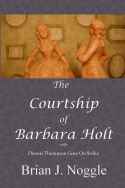The first two paragraphs of the book:
Twenty-five hundred Missouri troops surrounded the Mormon town of Far West on the night of 31 October 1838. Nearly eight hundred Mormon defenders waited silently behind their makeshift barricade of wagons, house logs, and floor planks, which extended three-quarters of a mile across the southern edge of town. Gen. Samuel D. Lucas, commander of the militia, warned Mormon leaders that he would destroy the town if they refused to surrender and leave the state. The Mormons prepared for attack. “We knew their determination was to exterminate us & [we] made up our determination to defend the City until the last man should fall to the ground,” wrote a sleepless Mormon soldier tbat night. “…we have the promise that but little blood would be shed at this time. But God only knows how we are to be delivered.”
The confrontations between the Mormons and their Missouri neighbors vividly illustrate the powerful cultural forces that have fostered a tradition of extralegal violence in America. Since colonial times, when impassioned citizens tarred and feathered tax collectors, dumped English tea into Boston harbor, and declared their independence from Great Britain, Americans have claimed the right to take the law into their own hands to enforce justice. Such violence has generally been conservative in purpose, and thus supported or tolerated by a large portion of the population. Vigilante organizations, often led by members of the local elite, acted to preserve established customs and practices against persons and groups that were perceived as a threat to society. “One is impressed that most American violence…had been initiated with a ‘conservative’ bias,” writes historian Richard Hofstadter. “It has been unleashed against abolitionists, Catholics, radicals, workers and labor organizers, Negroes, Orientals, and other ethnic or racial or ideological minorities, and has been used ostensibly to protect the American, the Southern, the white Protestant, or simply the established middle-class way of life and morals.” Another historian of American violence, Richard M. Brown, similarly concludes, “American opinion generally supported vigilantism; extralegal activity by a provoked populace was deemed to be the rightful action of good citizens.”
Oh, for Pete’s sake. Two paragraphs into a purported history, and the author is pointing the finger at conservatives. This is a current political term that the author and the historian he cites apply retroactively to the bad guys in their narratives. Maybe he’ll go on to mention the extralegal violence perpetrated by those seeking to overturn the political and cultural order or to “advance the cause” of the aggrieved populations listed in Hofstader’s litany.
Somehow I doubt it.
I made it almost two paragraphs into the book, but I’m not eager to rush into a “history” book that wears its bias and narrative on its sleeve. Hugh Thomas cheerleading human sacrifice, I can take. But not this.
The fact that this book is still in print probably indicates that it’s a textbook somewhere, at the very least at the University of Missouri. Joy.
I made it further into The Ruins, but that makes two books this year I have opened but won’t finish. I am such a quitter.



1 thought on “Two Paragraphs of a Book Report: The 1838 Mormon War in Missouri by Stephen C. LeSueur (1986)”
Comments are closed.